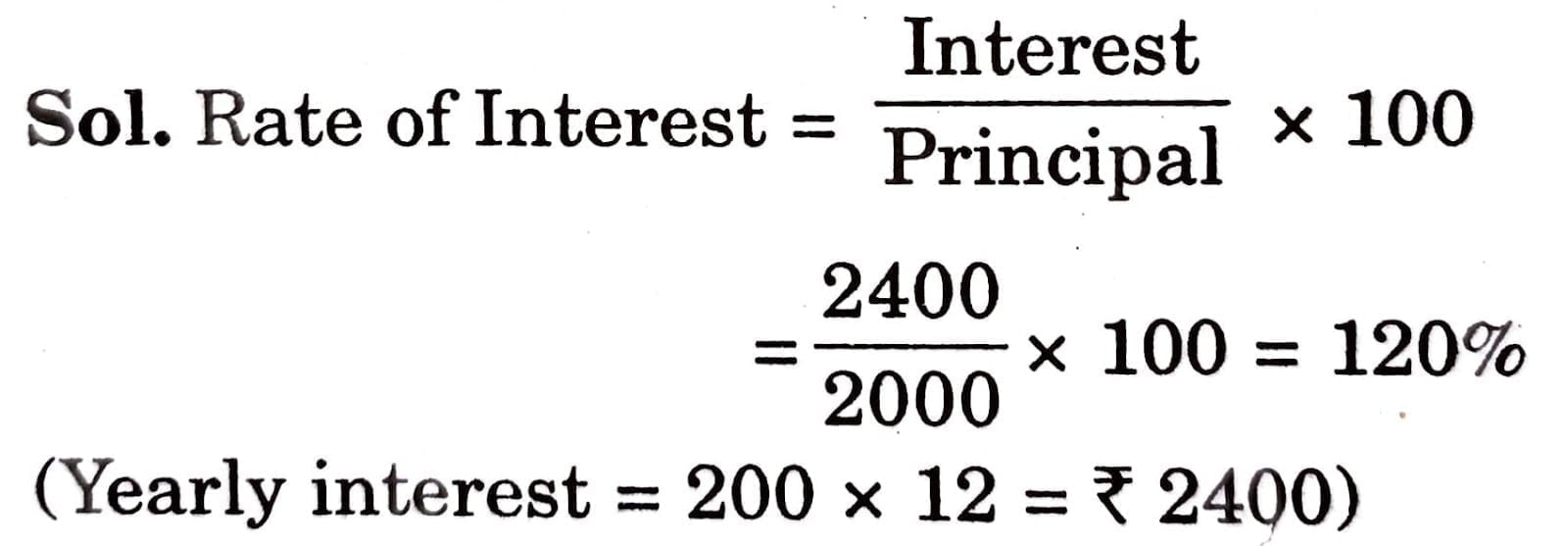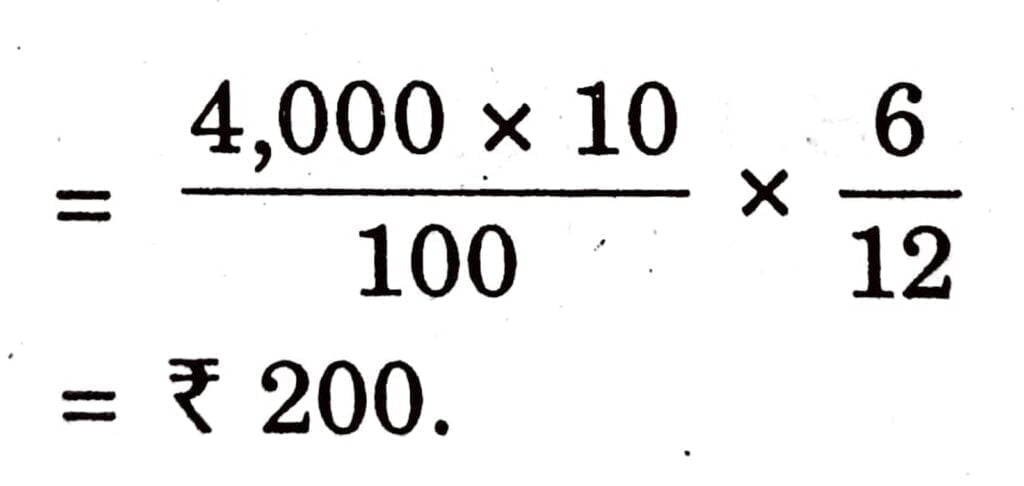NIOS Class 10 Economics Chapter 16 Saving and Insurance Solutions to each chapter is provided in the list so that you can easily browse through different chapters NIOS Class 10 Economics Chapter 16 Saving and Insurance and select need one. NIOS Class 10 Economics Chapter 16 Saving and Insurance Question Answers Download PDF. NIOS Study Material of Class 10 Economics Notes Paper 214.
NIOS Class 10 Economics Chapter 16 Saving and Insurance
Also, you can read the NIOS book online in these sections Solutions by Expert Teachers as per National Institute of Open Schooling (NIOS) Book guidelines. These solutions are part of NIOS All Subject Solutions. Here we have given NIOS Class 10 Economics Chapter 16 Saving and Insurance, NIOS Secondary Course Economics Solutions for All Chapters, You can practice these here.
Saving and Insurance
Chapter: 16
MODULE 5: MONEY, BANKING AND INSURANCE
TEXTBOOK QUESTIONS (SOLVED)
INTEXT QUESTIONS 16.1
Q.1. Define saving.
Ans. Saving is defined as surplus of income over consumption.
Q.2. If income is ₹ 1000 and saving is ₹ 200, then what is the amount of consumption.
Ans. Consumption = Income – Saving
= 1000 – 200 = ₹ 800
INTEXT QUESTIONS 16.2
Q.1. Define rate of interest.
Ans. Rate of interest is the payment made by the borrower for use of every 100 rupees given by the lender for one year.
Q.2. Distinguish between lender or borrower.
Ans. A lender is a person or institution who gives loan.
A borrower is a person or institution who takes money on loan from the lender.
Q.3. What is the rate of interest of you earn 20 in a month by lending ₹ 200?

INTEXT QUESTIONS 16.3
Q.1. DIfferentiate between insurer and insured.
Ans. Insurer is the seller of insurance, whereas insured is the buyer of insurance.
Q.2. Given two examples of uncertainty.
Ans. Two examples of uncertainty:
(i) Drought. and
(ii) Illness.
Q.3. Is insurance a product?
Ans. Yes, insurance is a product.
TERMINAL EXERCISE
Q.1. Define saving. Give two of its uses.
Ans. Saving may be defined as the excess of income over consumption. It is the amount of income which is carried forward to future after meeting the current expenditure on goods and services and other things.
Two Uses of Saving: (i) Lending and Borrowing of a person.
(ii) Development of the economy.
Q.2. How is saving calculated? Why do people save?
Ans. Saving is calculated by substracting the yearly expenditure from yearly income. For calculating saving, we take yearly income and yearly expenditure. This is due to the fact that there are some expenditures which are made towards the end of the year and not necessarily every month. For example, we spend money on food, daily use goods etc. regularly. But expenditure on fees, tax to government etc. are calculated on yearly basis. So it is better to take income and expenditure of the whole year to calculate saving.
People save to increase the future income and secure their future.
Q.3. Write a short note on Post Office Savings Bank.
Ans. Post Office Savings Bank: Any individual can keep his savings in the Post Office Saving Bank. Any citizen of the country can open an account in his/her name in any Post Office by depositing a minimum of ₹ 50 only. A person can keep his/her money for any period of time subject to the condition that a minimum balance of ₹ 50 is left in the account. A pass-book is provided by the Post office to keep the transactions made by the holder of the account. The Post office allows a nominal rate of interest on saving bank account. If a person wants to have a cheque book, then he/ she has to keep a minimum balance of ₹ 500 in his/her account.
Q.4. Why people buy insurance?
Ans. People buy insurance to reduce risk due to uncertainty. Uncertainty involves risk of loss or damage. Insurance helps to compensate, the loss and damage in monetary terms either fully or partially.
Q.5. Explain Auto Insurance.
Ans. Auto Insurance: People have scooters, bikes, cars etc. can buy auto insurance from a concerned insurance company.
Auto insurance policy is made in the following ways:
(i) In the first year, the insurance company charges higher money as premium from the insured person as the auto is new.
(ii) In the subsequent years, the company charges less premium from the insured person as the value of auto falls with the passage of time.
(iii) Whenever there is any damage caused to the automobile, the insurance company gives the claim calculated on the basis of terms and conditions mentioned in the insurance policy.
Q.6. Distinguish between Health and Life Insurance.
Ans. (i) Health Insurance: This insurance is an important product of a general insurance sector. It enables the insured person to recover expenses of medical treatment by the insurer. A reasonable premium is paid by the insured at different intervals of time period. Under this type of insurance, the insurance company asks the interested person to pay a nominal amount as premium every year. Normally the premium is low if a person buys the health insurance at a young age. The premium amount increases as the person grows older.
(ii) Life Insurance: A person can buy Life Insurance for a particular time period. The time period may be 5, 10, 15, 20 years. Every year the insured person has to pay a certain amount of premium to the insurance company. The company gives back the claim to the person after the time period is over. The amount can also be paid in instalments by the insurance company on yearly basis also. If the person dies in between, the claim is given to his/her nominee, whom the person had named while buying life insurance.
SOME IMPORTANT QUESTIONS FOR EXAMINATIONS
VERY SHORT ANSWER TYPE QUESTIONS
Q.1. Apart from production and consumption which is also a very important economic activity?
Ans. Saving.
Q.2. Why do people produce and consume goods?
Ans. People produce and consume goods to lead their present and future life properly.
Q.3. If we spend everything today from production, then what will happen?
Ans. In that case nothing will remain to start the activities tomorrow.
Q.4. Saving is amount of income?
Ans. Saving is the amount of income which is carried forward to future meeting the current expenditure on goods and services and other things. It means that saving is the surplus of income over expenditure.
Q.5. Give one example of expenditure which is not made every month.
Ans. Tax to Government.
Q.6. A man’s yearly consumption is ₹ 3 lakh and yearly saving is ₹ one lakh. Calculate his yearly income.
Ans. Yearly Income = Yearly Consumption + Yearly Saving = ₹ 3,00,000 + ₹ 1,00,000 = ₹ 4,00,000
Q.7. Which type of saving is a family saving box?
Ans. It is an informal type of saving.
Q.8. Write down two limitations of a family saving box.
Ans. (i) Box saving is not safe because of the threat of theft.
(ii) It can not be used for saving a big amount.
Q.9. If a person having his saving account in Post Office wants to have a cheque-book, how much a minimum balance he has to keep in his account.
Ans. A minimum balance of ₹ 500.
Q.10. A lent ₹ 1000 to B.B repaid him ₹ 1100 after one month and settled the account. Calculate the amount of interest.
Ans. Amount of Interest = 1100 – 1000 = ₹ 100
Q.11. How is rate of interest calculated?
Ans. Rate of interest is calculated by applying following formula:

Q.12. Suppose Ram lent ₹ 1000 to Mohan for one year. Mohan settled his account by paying ₹ 1120 to Ram after one year. Calculate rate of interest.

Q.13. What is the rate of interest on saving in Post Office account?
Ans. 3.5% per annum.
Q.14. What is the rate of interest on bank saving account?
Ans. 4% per annum.
Q.15. You earn ₹ 200 per monthly by lending ₹ 2000. What is the rate of interest?

Q.16. “We are living in a world of uncertainty”. What does this statement imply?
Ans. This statement implies that we do not know what will happen in future.
Q.17. Where do people deposit their savings generally?
Ans. People deposit their savings generally in post offices and banks.
Q.18. Why do people buy insurance?
Ans. People buy insurance to reduce the risk of loss or damage to their life, health automobiles etc.
Q.19. In case of life insurance if a person dies before the maturity of policy, who receives the claim from the insurance company?
Ans. In the event of death, the nominee receives the claim from the insurance company.
SHORT TYPE QUESTIONS ANSWER
Q.1. Below find the data of income and expenditure of Ram a year. Calculate yearly saving with the help of data. Ram lends his saving for 6 months at the rate of 10% per annum. Calculate Interest.
(i) Income for the first five months = ₹ 10,000
(ii) Income for the last seven months = ₹ 14000
(iii) Expenditure for first 5 month = ₹ 8,000
(iv) Expenditure for last 7 months = ₹ 12,000
Ans. Total Income = 10,000 + 12,000 = ₹ 24,000
Total Expenditure = 8,000 + 12,000 = ₹ 20,000
Total Saving = 24,000 – 20,000 = ₹ 4,000
Interest on ₹ 4,000 for six months at the rate of 10% per annum

Q.2. Which is the informal way of saving? Write down the two limitations of informal way of saving.
Ans. A family saving box is an informal way of saving.
Following are two limitations of this informal way of saving:
(i) It cannot be used for saving a big amount.
(ii) It is also not safe to keep money in this manner, because of the threat of theft.
Q.3. Name any two places where a man keep his savings safe. Why is a pass-book issued if saving is kept there?
Ans. Savings can be kept safely in the Post offices and commercial banks.
These institutions issue pass-books to keep record of the transactions made by the holder the account.



